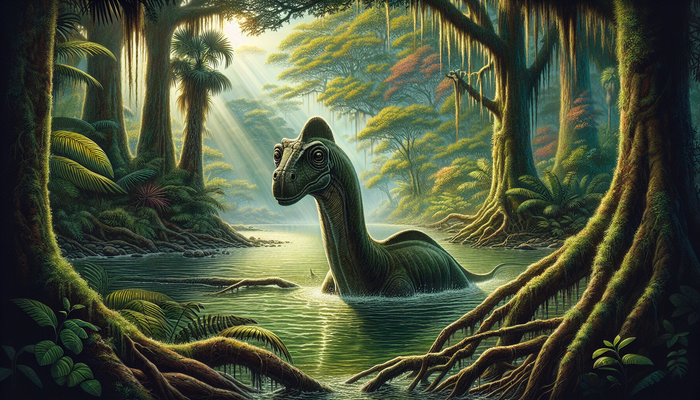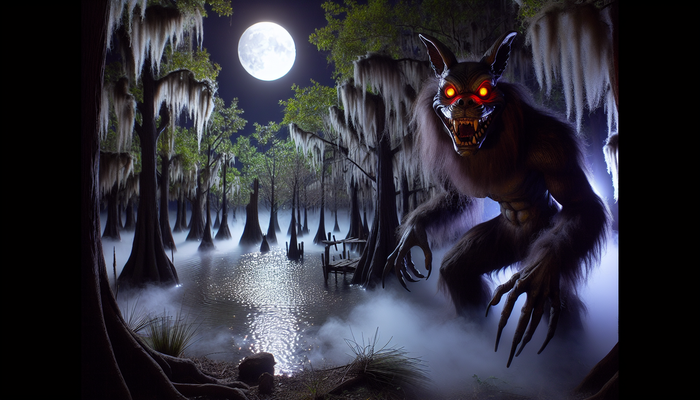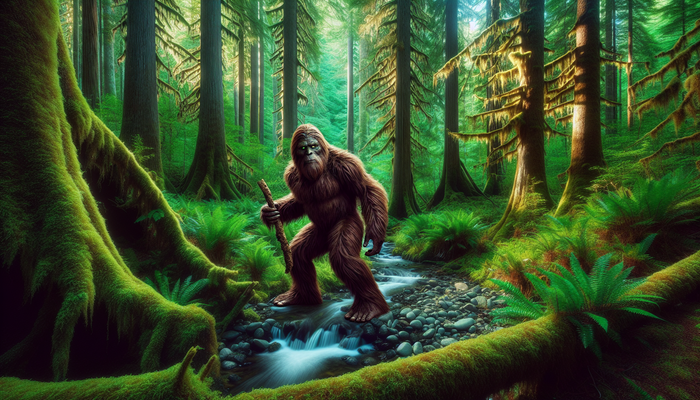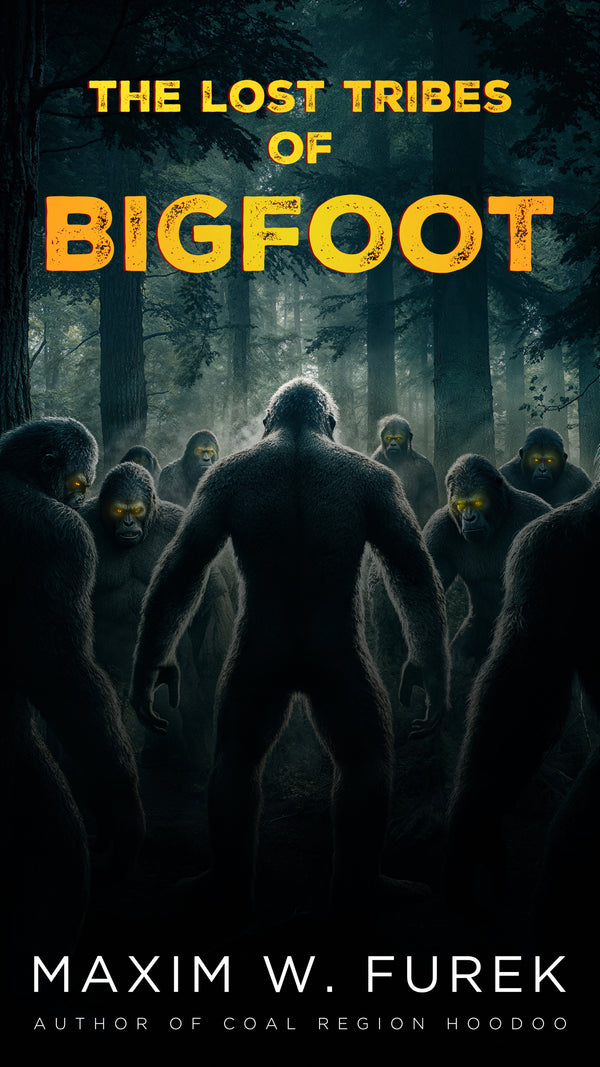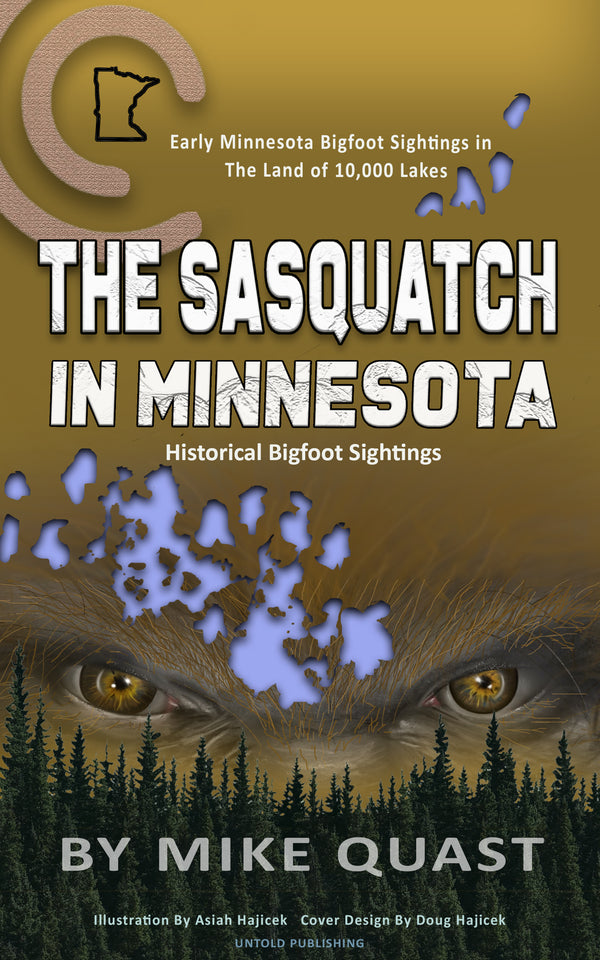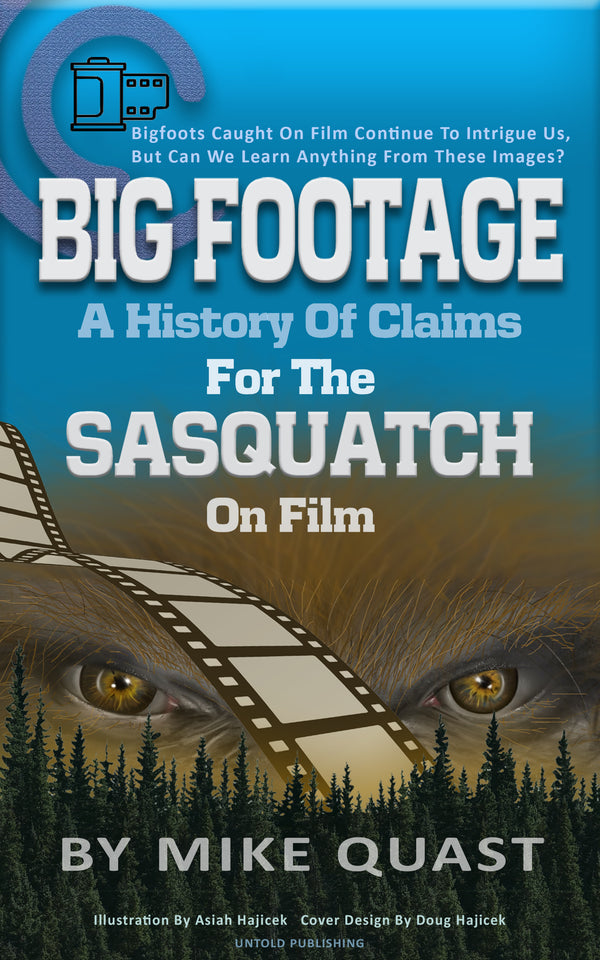What to Do If You Meet Bigfoot?
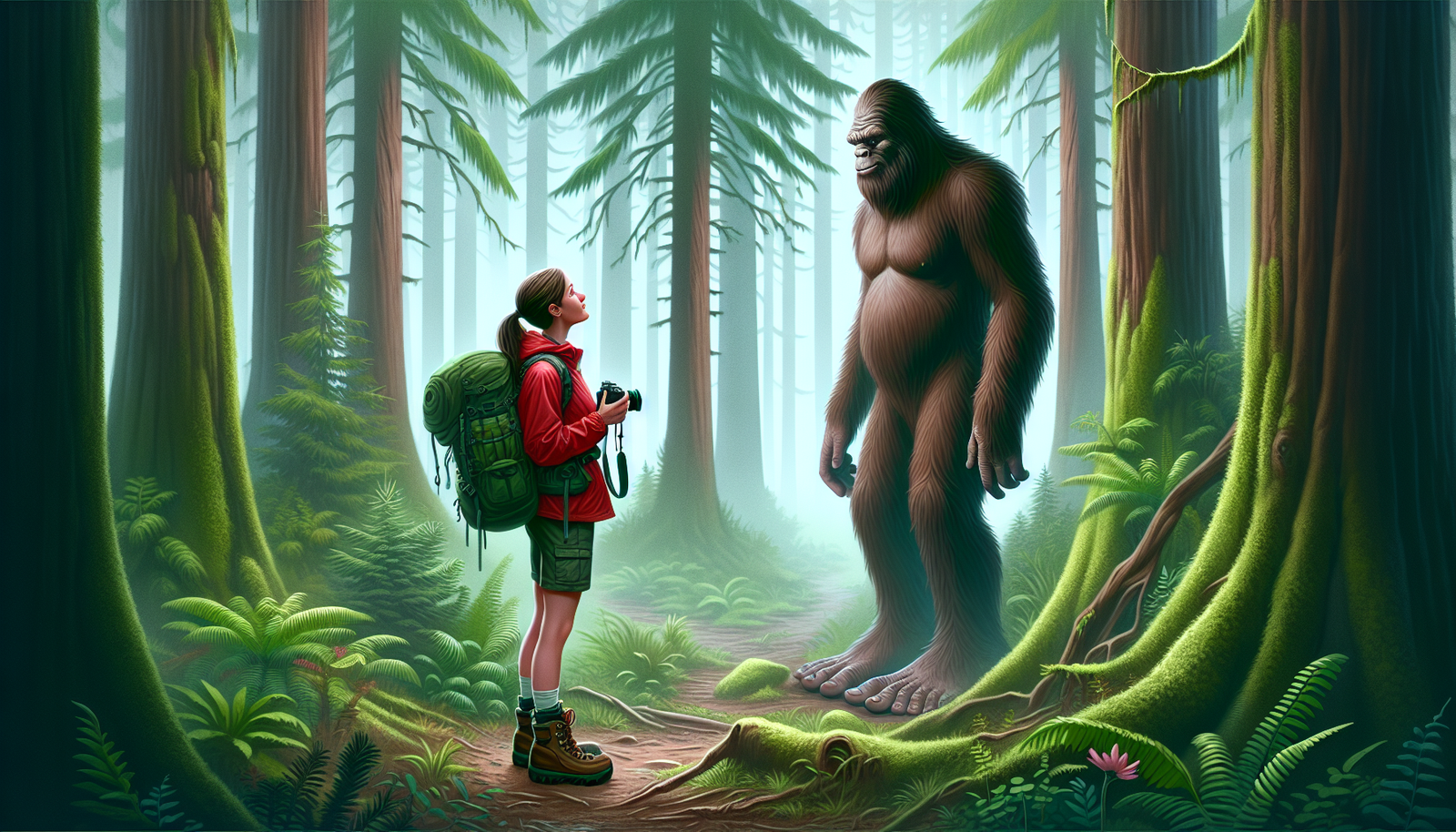
By Oliver Bennett, Cryptozoologist
What to Do If You Meet Bigfoot: A Hiker's Guide to Safe Encounters What to Do If You Meet Bigfoot: A Hiker's Guide to Safe Encounters
As I sit in my study, surrounded by maps of unexplored territories and tomes of cryptozoological lore, I can't help but marvel at the enduring fascination with Bigfoot. The very notion of encountering this elusive creature in the wild sends shivers of excitement down the spine of even the most seasoned hiker. But what if such an encounter were to actually occur? How would one react, and more importantly, how should one react?
This guide aims to equip you, dear reader, with the knowledge and practical wisdom necessary to navigate a potential Bigfoot encounter safely and respectfully. Drawing from years of research, countless interviews with eyewitnesses, and a deep dive into the cultural significance of this legendary being, I hope to provide you with a comprehensive resource that goes beyond mere speculation and sensationalism.
The allure of Bigfoot lies not just in its physical elusiveness, but in its ability to capture our collective imagination. It represents the untamed wilderness, the possibility of the unknown, and perhaps even a connection to our primal past. As we venture into the forests and mountains, the thought that we might stumble upon something extraordinary adds an extra layer of excitement to our adventures.
But let us not forget that if Bigfoot does indeed exist, it is a living creature deserving of our respect and consideration. Our approach to a potential encounter should be guided by caution, curiosity, and above all, a deep reverence for the natural world and its mysteries.
Understanding Bigfoot: The Myth and the Mystery
Before we delve into the practicalities of a Bigfoot encounter, it's crucial to understand what we're dealing with – or at least, what we think we're dealing with. The creature known as Bigfoot, or Sasquatch, has been described with remarkable consistency across hundreds of reported sightings. Typically, Bigfoot is said to stand between 7 to 10 feet tall, with a robust, ape-like body covered in dark, shaggy hair. Its face is often described as broad and flat, with a pronounced brow ridge and deep-set eyes.
But Bigfoot is more than just a physical description. It's a cultural phenomenon that has captured the imagination of people around the world. The term "Sasquatch" itself comes from the Halkomelem word "sésq'ǝc," meaning "wild man" or "hairy man." This linguistic connection underscores the deep roots of the Bigfoot legend in Native American folklore.
Many indigenous cultures across North America have their own stories of wild, human-like creatures inhabiting the forests. These beings are often portrayed not as monsters, but as guardians of nature, possessing great strength and wisdom. The Lakota people, for instance, speak of the Chiye-tanka, or "Big Elder Brother," a creature that serves as a reminder of humanity's connection to the natural world.
This cultural context is crucial to understanding the significance of Bigfoot beyond mere cryptozoological curiosity. It represents a bridge between the human and natural worlds, a symbol of the wild places that still exist beyond the reach of our modern, technologically-driven society.
Behaviorally, Bigfoot is often described as shy and elusive, preferring to avoid human contact. However, there have been reports of more aggressive behavior, particularly when the creature feels threatened or cornered. This duality in reported behavior – sometimes curious, sometimes fearful, occasionally aggressive – paints a picture of a complex being, one that defies simple categorization.
As we consider the possibility of encountering such a creature, it's important to approach the subject with an open mind, tempered by critical thinking. While the existence of Bigfoot remains unproven by scientific standards, the sheer volume and consistency of sightings across North America suggest that something unusual is being witnessed in our forests and mountains.
Preparing for Your Hike: Gear and Mindset
Whether you're setting out on a day hike or a multi-day backpacking trip, proper preparation is key to both enjoying your adventure and staying safe. This is especially true when venturing into areas known for Bigfoot sightings. While the chances of an actual encounter may be slim, being prepared for any eventuality will enhance your overall hiking experience.
Essential Gear
First and foremost, ensure you have reliable navigation tools. A detailed topographic map of the area and a compass are essential, even if you're also carrying a GPS device. Electronic devices can fail, but a map and compass, when used properly, will always point you in the right direction.
A well-stocked first aid kit is non-negotiable. Include basic supplies like bandages, antiseptic wipes, pain relievers, and any personal medications you might need. In the unlikely event of a startling encounter, you'll want to be prepared for minor injuries that could occur if you need to make a hasty retreat through rough terrain.
Don't forget to pack a reliable light source. A good quality headlamp with extra batteries is ideal, as it leaves your hands free. This is particularly important if you find yourself out after dark, whether by choice or circumstance.
A multi-tool or knife can be incredibly useful for a variety of situations, from preparing food to repairing gear. Choose one that's sturdy and versatile.
Adequate food and water are, of course, essential. Pack more than you think you'll need, as unexpected delays can happen. A water filtration system or purification tablets are also wise additions, allowing you to safely refill from natural sources if necessary.
An emergency whistle is a small but potentially life-saving item. Its shrill sound carries much farther than the human voice and requires less energy to use – crucial if you find yourself in need of assistance.
Lastly, don't forget your camera. While your safety should always be the primary concern in any wildlife encounter, having the means to document a Bigfoot sighting could be invaluable. Just remember – your personal safety comes before getting the perfect shot.
Mental Preparation
Physical preparation is only half the battle. Mental readiness is equally important, especially when venturing into areas where you might encounter the unexpected.
Cultivate a mindset of calm alertness. Practice being aware of your surroundings without jumping at every snapping twig. Familiarize yourself with the normal sounds and sights of the forest, so you can more easily identify anything out of the ordinary.
It's also important to trust your instincts. Our subconscious mind often picks up on subtle cues that our conscious mind might miss. If something feels off, it's worth paying attention to that feeling.
Remember, the goal of any hike should be to enjoy nature safely. Keep an open mind about what you might encounter, but don't let the prospect of a Bigfoot sighting overshadow the beauty and wonder of the natural world around you.
What to Do If You Encounter Bigfoot
Now we come to the crux of the matter – what should you do if you find yourself face to face with Bigfoot? While such an encounter remains highly improbable, it's best to be prepared. The following steps are designed to keep you safe while also respecting the creature, should you be fortunate (or unfortunate, depending on your perspective) enough to have such an encounter.
Step 1: Stay Calm and Assess the Situation
Your first reaction upon seeing a large, unknown creature might be panic. This is natural, but it's crucial to remain as calm as possible. Take a deep breath and try to assess the situation rationally. Is the creature aware of your presence? How is it behaving? Is it showing signs of aggression or merely curiosity?
Remember, if this is indeed a Bigfoot, it's likely to be as startled by your presence as you are by its. Sudden movements or loud noises could provoke an unwanted reaction. By remaining calm, you're more likely to make good decisions and less likely to trigger an aggressive response.
Step 2: Do Not Approach
This cannot be stressed enough – do not approach the creature. Maintain a safe distance at all times. Bigfoot sightings often describe a creature of immense strength, and even if its intentions are not hostile, a frightened or cornered animal can be dangerous.
If you've stumbled upon the creature unexpectedly and find yourself too close for comfort, slowly and calmly back away. Do not turn your back on the creature, but also avoid direct eye contact, as this could be perceived as a challenge.
Step 3: Make Your Presence Known
If the creature hasn't noticed you and you feel safe doing so, calmly announce your presence. Speak in a low, steady voice – not a whisper, which might be interpreted as a threat, but not shouting either. The goal is to make the creature aware of you without startling it.
You might say something like, "Hello there. I mean you no harm. I'm just passing through." The content of your words is less important than the calm, non-threatening tone of your voice.
Step 4: Document the Encounter
If you can do so safely, try to document the encounter. This could be through photographs, video, or even quick sketches and notes. However, remember that your safety is paramount. Don't put yourself at risk for the sake of documentation.
If you have a camera or smartphone, try to capture images or video from a safe distance. If this isn't possible, make mental notes of details like the creature's size, coloration, and any distinctive features. As soon as you're able, write down everything you can remember about the encounter, including the time, location, weather conditions, and the creature's behavior.
Step 5: Back Away Slowly
Once you've had the opportunity to observe and possibly document the encounter, it's time to leave the area. Move slowly and deliberately, avoiding any sudden movements that might startle the creature. Continue to face in the general direction of the Bigfoot as you retreat, but avoid direct eye contact.
If the terrain allows, try to keep obstacles between you and the creature as you move away. This could be large trees, boulders, or other natural features. These can provide some cover if the creature decides to approach.
Step 6: Leave the Area Quietly
As you increase your distance from the creature, maintain your calm and quiet demeanor. Don't run, as this could trigger a chase response. Instead, walk steadily and purposefully away from the area.
Once you're at a safe distance and out of sight of the creature, you can increase your pace. Head towards a known trail or landmark, and if you're with a group, make sure everyone is accounted for.
Step 7: Report the Sighting
After ensuring your safety and leaving the area, consider reporting your sighting. Organizations like the Bigfoot Field Researchers Organization (BFRO) collect and investigate Bigfoot reports. Local wildlife authorities might also be interested in your experience.
When reporting, stick to the facts of what you saw and experienced. Avoid embellishment or speculation. If you were able to capture any photographic or video evidence, make copies before sharing them.
Remember, reporting your sighting contributes to our collective understanding of this phenomenon, whether Bigfoot turns out to be a yet-undiscovered species or a case of misidentification.
Unique Encounters: Real Stories from Hikers
While skeptics might dismiss Bigfoot as mere folklore, the numerous eyewitness accounts from credible observers suggest that something unusual is indeed being encountered in our wilderness areas. Let's examine a couple of recent, well-documented cases that highlight the ongoing nature of this phenomenon.
The Ohio Sighting
In February 2020, two hikers reported a remarkable encounter in Salt Fork State Park, Ohio. The men were exploring an area of the park known for its Bigfoot sightings when they spotted a tall, dark figure moving through the trees. They managed to capture video footage of the encounter, which shows a large, bipedal creature walking upright before disappearing into the forest.
What makes this sighting particularly intriguing is the reaction of the witnesses. Their genuine surprise and excitement, captured in real-time, lend credibility to their account. The video, while not conclusive, shows a figure that matches typical Bigfoot descriptions – tall, dark, and moving with a fluid, yet powerful gait that seems distinct from human movement.
The location of this sighting is also noteworthy. Salt Fork State Park has a long history of Bigfoot encounters, with numerous reports over the years. This consistency in location adds an interesting dimension to the ongoing mystery.
The Uwharrie National Forest Experience
Another compelling account comes from the Uwharrie National Forest in North Carolina. In 2019, a seasoned hiker reported a series of unusual experiences during a solo camping trip. While setting up camp for the night, the hiker heard what he described as "wood knocks" – a sound often associated with Bigfoot activity. These knocks seemed to be coming from different directions, as if multiple creatures were communicating.
Later that night, the hiker was awoken by heavy footsteps outside his tent. He described the footfalls as far too heavy to be from any known wildlife in the area. The footsteps were accompanied by deep, resonant breathing that the hiker said sent chills down his spine.
While this encounter didn't include a visual sighting, the combination of auditory experiences – the wood knocks and the heavy footsteps – align closely with other reported Bigfoot encounters. The hiker's familiarity with local wildlife and his experience in the outdoors lend weight to his account.
What's particularly interesting about this case is the duration of the experience. The hiker reported feeling watched for the remainder of his trip, and found several large, unusual footprints near his campsite the following morning.
These accounts, while anecdotal, provide valuable insight into the nature of reported Bigfoot encounters. They highlight the unexpected and often unsettling nature of these experiences, as well as the profound impact they have on the witnesses. Whether these encounters represent an undiscovered species, misidentifications of known animals, or something else entirely, they continue to captivate our imagination and drive further exploration of our wilderness areas.
The Science Behind the Legend
As we delve deeper into the Bigfoot phenomenon, it's crucial to examine the scientific perspective. While mainstream science has yet to accept the existence of Bigfoot, there are aspects of the mystery that warrant serious consideration.
The Role of Folklore
Folklore plays a significant role in the Bigfoot phenomenon. Stories of wild, human-like creatures inhabiting the wilderness are found in cultures around the world. From the Yeti of the Himalayas to the Yowie of Australia, these legends share striking similarities.
Anthropologists suggest that such widespread myths might serve important cultural functions. They could be ways of teaching respect for nature, explaining unusual natural phenomena, or preserving ancient memories of encounters with now-extinct hominids.
However, the persistence and consistency of Bigfoot reports in modern times suggest that more than just folklore might be at play. The sheer number of sightings by credible witnesses, including law enforcement officers, wildlife biologists, and other trained observers, indicates that something unusual is being encountered.
The Search for Physical Evidence
While compelling eyewitness accounts abound, the search for conclusive physical evidence of Bigfoot's existence continues. Several types of evidence are often cited by researchers:
- Footprints: Large, human-like footprints are the most common form of physical evidence reported. Some of these prints have been found in remote areas, far from human habitation, and have been cast in plaster for further study. Analysis of these casts has revealed dermal ridges (similar to human fingerprints) and flexibility characteristics that some experts argue are inconsistent with hoaxes.
- Hair Samples: Unidentified hair samples have been collected from areas of reported Bigfoot activity. While many turn out to be from known animals, some samples have been described as "unknown primate" by hair analysis experts.
- Audio Recordings: Numerous recordings exist of strange vocalizations attributed to Bigfoot. These often include powerful howls, unusual whoops, and complex language-like sounds. Audio experts have analyzed many of these recordings and found them to be outside the range of known wildlife sounds.
- Video and Photographic Evidence: While often blurry or inconclusive, there have been numerous photos and videos purporting to show Bigfoot. The most famous of these is the Patterson-Gimlin film from 1967, which continues to be debated by experts.
The Plausibility of an Undiscovered Primate
One of the most compelling arguments for the possibility of Bigfoot's existence comes from the field of zoology. New species are discovered with surprising regularity, even in the 21st century. In 2017, for example, a new species of orangutan was confirmed in Sumatra, showing that large primates can indeed escape scientific detection.
The vast wilderness areas of North America, particularly in the Pacific Northwest, could theoretically support a small population of large, intelligent primates. The region's dense forests, abundant food sources, and areas of minimal human intrusion provide a potential habitat.
However, the lack of conclusive physical evidence, such as bodies or fossils, remains a significant hurdle to scientific acceptance. Critics argue that a breeding population of large animals would inevitably leave behind more tangible evidence of their existence.
Ongoing Research and Future Prospects
Despite the skepticism of mainstream science, research into the Bigfoot phenomenon continues. Organizations like the Bigfoot Field Researchers Organization (BFRO) conduct regular expeditions, collecting data and investigating sightings.
Advancements in technology are also changing the landscape of Bigfoot research. The proliferation of trail cameras, drones, and thermal imaging equipment is providing new tools for researchers. DNA analysis techniques have also advanced significantly, allowing for more detailed analysis of hair and scat samples.
While the existence of Bigfoot remains unproven, the ongoing research serves a valuable purpose. It encourages exploration of our wilderness areas, promotes conservation efforts, and reminds us that there may still be mysteries to uncover in the natural world.
As we continue to push the boundaries of scientific knowledge, it's important to keep an open mind while maintaining a critical, evidence-based approach. The Bigfoot phenomenon, whether it ultimately proves to be a case of misidentification, an as-yet-undiscovered species, or something else entirely, continues to drive our curiosity and our connection to the wild places of our world.
Bigfoot Hotspots: Where to Look
For those intrigued by the possibility of a Bigfoot encounter, certain areas of North America have gained reputations as hotspots for sightings and unusual activity. While it's important to approach any expedition with a healthy dose of skepticism and respect for nature, these locations offer not only the potential for unusual encounters but also breathtaking natural beauty and excellent hiking opportunities.
The Pacific Northwest
Undoubtedly, the Pacific Northwest stands as the epicenter of Bigfoot lore and reported sightings. The dense, old-growth forests of Oregon, Washington, and Northern California provide the perfect backdrop for tales of an elusive, forest-dwelling primate.
- Olympic National Park, Washington: This vast wilderness area encompasses nearly a million acres of protected land, including temperate rainforests, rugged coastlines, and alpine meadows. The park's remote interior, particularly areas like the Hoh Rainforest, have been the site of numerous Bigfoot reports over the years.
- Six Rivers National Forest, California: This area in Northern California is home to the famous "Bluff Creek" site, where the Patterson-Gimlin film was shot in 1967. The forest's diverse ecosystems and remote locations continue to attract Bigfoot enthusiasts.
- Mount Hood National Forest, Oregon: With its mix of dense forests and high-altitude environments, Mount Hood has been a hotspot for Bigfoot sightings for decades. The Clackamas River area, in particular, has a history of interesting reports.
The Appalachian Region
While less famous for Bigfoot activity than the Pacific Northwest, the Appalachian Mountains have their own rich history of sightings and folklore.
- Great Smoky Mountains National Park: Straddling the border between North Carolina and Tennessee, this park is not only the most visited in the U.S. but also a hotbed of Bigfoot activity. The park's vast wilderness areas provide ample opportunity for exploration.
- Uwharrie National Forest, North Carolina: This ancient mountain range, mentioned earlier in our real encounters section, has a long history of Bigfoot sightings. Its mix of hardwood forests and rugged terrain make it an intriguing location for researchers.
Other Notable Locations
- Salt Fork State Park, Ohio: As discussed in our section on recent encounters, this park in eastern Ohio has gained a reputation as a Bigfoot hotspot in recent years. The park offers a variety of hiking trails and camping opportunities.
- Fouke, Arkansas: This small town gained fame in the 1970s due to reported sightings of the "Fouke Monster," a Bigfoot-like creature. While sightings have decreased in recent years, the area's swamps and forests continue to attract curious visitors.
- Whitehall, New York: This town in upstate New York has embraced its Bigfoot legacy, even erecting a Bigfoot statue in the town center. The surrounding Adirondack Mountains have a long history of sightings and unusual encounters.
The Bigfoot Trail
For those looking for a more structured Bigfoot-themed adventure, the Bigfoot Trail in Northern California offers a unique opportunity. This 360-mile route through the Klamath Mountains was created in 2009 by Michael Kauffmann, not just as a tribute to the legendary creature, but also to showcase the incredible biodiversity of the region.
The trail passes through six wilderness areas and one national park, offering hikers a chance to experience some of the most remote and biologically diverse landscapes in North America. While the trail's name is a nod to the region's Bigfoot lore, its real value lies in the opportunity it provides to explore and appreciate these unique ecosystems.
Hikers on the Bigfoot Trail will traverse a variety of habitats, from low-elevation oak woodlands to high alpine meadows. The trail is home to 32 conifer species, earning the region the title of the most diverse conifer forest in the world. This diversity of plant life supports a rich array of wildlife, making the trail a paradise for naturalists and wildlife enthusiasts.
While the chances of actually encountering a Bigfoot on these trails remain slim, the real value of these expeditions lies in the opportunity to connect with nature, challenge oneself physically and mentally, and perhaps gain a deeper appreciation for the mysteries that still exist in our world. Whether you're a serious Bigfoot researcher or simply an outdoor enthusiast with a sense of adventure, these locations offer experiences that go far beyond the search for an elusive creature.
Leave No Trace: Respecting Nature and Bigfoot
As we venture into the wilderness in search of adventure or in hopes of a Bigfoot encounter, it's crucial to remember our responsibility to the natural world. The Leave No Trace principles provide an excellent framework for minimizing our impact on the environment, ensuring that these wild places remain pristine for future generations – and perhaps for Bigfoot itself.
- Plan Ahead and Prepare: Proper planning not only enhances your safety and enjoyment but also helps minimize damage to nature. Know the regulations and special concerns for the area you'll visit, prepare for extreme weather, hazards, and emergencies, and schedule your trip to avoid times of high use when possible.
- Travel and Camp on Durable Surfaces: Stay on established trails and campsites. In popular areas, concentrate use on existing trails and campsites. In pristine areas, disperse use to prevent the creation of new campsites and trails. Remember, good campsites are found, not made.
- Dispose of Waste Properly: Pack it in, pack it out. Inspect your campsite and rest areas for trash or spilled foods. Pack out all trash, leftover food, and litter. Deposit solid human waste in catholes dug 6 to 8 inches deep, at least 200 feet from water, camp, and trails. Cover and disguise the cathole when finished.
- Leave What You Find: Preserve the past: examine, but do not touch cultural or historic structures and artifacts. Leave rocks, plants and other natural objects as you find them. Avoid introducing or transporting non-native species.
- Minimize Campfire Impacts: Campfires can cause lasting impacts to the environment. Use a lightweight stove for cooking and enjoy a candle lantern for light. Where fires are permitted, use established fire rings, fire pans, or mound fires. Keep fires small. Only use sticks from the ground that can be broken by hand. Burn all wood and coals to ash, put out campfires completely, then scatter cool ashes.
- Respect Wildlife: Observe wildlife from a distance. Do not follow or approach them. Never feed animals. Feeding wildlife damages their health, alters natural behaviors, and exposes them to predators and other dangers. Protect wildlife and your food by storing rations and trash securely.
- Be Considerate of Other Visitors: Respect other visitors and protect the quality of their experience. Be courteous. Yield to other users on the trail. Step to the downhill side of the trail when encountering pack stock. Take breaks and camp away from trails and other visitors. Let nature's sounds prevail. Avoid loud voices and noises.
Bigfoot as a Symbol of Wilderness
Whether Bigfoot exists as a flesh-and-blood creature or solely in the realm of folklore, it serves as a powerful symbol of the untamed wilderness. The very idea of Bigfoot represents the possibility that there are still mysteries to be discovered, that our understanding of the natural world is not complete.
In this context, our search for Bigfoot becomes more than just a quest to prove or disprove its existence. It becomes a journey of reconnection with the natural world, a reminder of the importance of preserving wild spaces not just for their known inhabitants, but for the unknown as well.
By following Leave No Trace principles, we show respect not just for the environment and other hikers, but for the very spirit of exploration and mystery that Bigfoot represents. We preserve the possibility of discovery, ensuring that these wild places remain wild, retaining their capacity to surprise and inspire us.
Moreover, the ethos of Leave No Trace aligns perfectly with the reported behavior of Bigfoot itself. If such a creature does exist, it has managed to leave remarkably little evidence of its presence, living in harmony with its environment in a way that we, as a species, often struggle to achieve.
As we venture into the wilderness, whether in search of Bigfoot or simply to enjoy the beauty of nature, let us strive to emulate this ideal. Let us move through these spaces with respect and care, leaving them as we found them – or perhaps even a little better. In doing so, we not only preserve these environments for future generations of humans but also maintain the wild, mysterious quality that makes them so special.
Remember, the true value of a Bigfoot expedition lies not in the destination, but in the journey. It's about the connection we forge with nature, the sense of wonder we cultivate, and the respect we develop for the unknown. By treading lightly and respectfully through these wild spaces, we honor the spirit of exploration and the enduring mystery of Bigfoot.
Embracing the Adventure
As we conclude our comprehensive guide to Bigfoot encounters, it's important to reflect on the broader implications of this enduring mystery. The legend of Bigfoot, whether rooted in reality or purely mythical, serves a valuable purpose in our modern world. It reminds us that there is still wonder to be found in the natural world, that our understanding of our environment is far from complete.
The very act of venturing into the wilderness in search of Bigfoot can be a transformative experience. It pushes us beyond our comfort zones, encourages us to sharpen our observational skills, and deepens our connection with nature. Even if we never catch a glimpse of the elusive creature, the journey itself can be profoundly rewarding.
Consider the skills you've developed in preparing for a potential Bigfoot encounter. You've learned to move quietly through the forest, to be aware of your surroundings, to identify and interpret various signs in nature. These are valuable skills that enhance any outdoor experience, regardless of your belief in Bigfoot.
Moreover, the search for Bigfoot often leads us to some of the most beautiful and remote areas of our world. Places like the Pacific Northwest's old-growth forests, the rugged Appalachian Mountains, or the vast wilderness of Alaska are worth visiting in their own right. The possibility of a Bigfoot encounter simply adds an extra layer of excitement to these already awe-inspiring locations.
It's also worth considering the community aspect of the Bigfoot phenomenon. Across North America and indeed around the world, groups of enthusiasts gather to share experiences, conduct research, and explore the wilderness together. These communities foster a spirit of camaraderie and shared adventure that can be deeply fulfilling.
As you set out on your own Bigfoot adventures, remember to keep an open mind balanced with critical thinking. Be prepared for the unexpected, but also be prepared to appreciate the journey regardless of the outcome. Take time to marvel at the beauty of a sunset over a mountain range, the intricate patterns of a fern unfurling in the forest understory, or the haunting call of a loon across a misty lake.
In the end, whether Bigfoot exists or not is perhaps less important than what the concept represents – the enduring mystery of the natural world, the thrill of exploration, and our innate human desire to connect with something larger than ourselves.
So pack your bags, lace up your hiking boots, and head out into the wilderness. Keep your eyes and ears open, your camera ready, and your sense of wonder intact. You may not find Bigfoot, but you're sure to find adventure, beauty, and a deeper appreciation for the wild places of our world.
And who knows? Perhaps one day, as you round a bend in a remote trail or set up camp in a secluded valley, you'll have an encounter that defies explanation. Until then, happy trails and safe exploring!
Additional Resources
For those eager to delve deeper into the world of Bigfoot research and outdoor adventure, here are some valuable resources to explore:
Recommended Reading:
- "Sasquatch: Legend Meets Science" by Jeff Meldrum - A scientific examination of the Bigfoot phenomenon by a professor of anatomy and anthropology.
- "Where Bigfoot Walks: Crossing the Dark Divide" by Robert Michael Pyle - A naturalist's perspective on the Bigfoot mystery and the wild places it inhabits.
- "The Sasquatch Seeker's Field Manual: Using Citizen Science to Uncover North America's Most Elusive Creature" by David George Gordon - A practical guide for amateur researchers.
- "Hiking Washington's History" by Judy Bentley - While not Bigfoot-specific, this book provides excellent background on many areas known for Bigfoot activity.
From Bigfoot to UFOs: Hangar 1 Publishing Has You Covered!
Explore Untold Stories: Venture into the world of UFOs, cryptids, Bigfoot, and beyond. Every story is a journey into the extraordinary. Immersive Book Technology: Experience real videos, sights, and sounds within our books. Its not just reading; its an adventure. Shop Now



